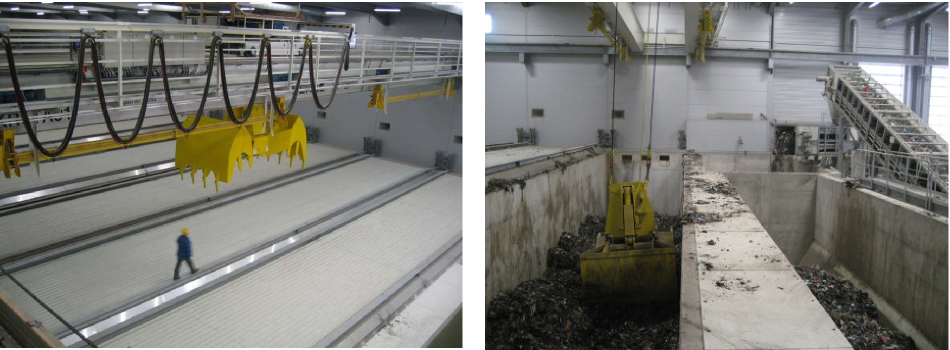Tim van Heeswijk from the sales division of Redwave presented the concept and the design at the 7th International Symposium MBT, MRF & Recycling 2017 in Hannover (May 16. – 18.).
According to Redwave in China household waste has a different composition in comparison to Europe. It has a relatively high content of organics and moisture, so when incinerated a lower energy efficiency is achieved. Depending on regional conditions the calorific value of MSW in China is in the range of 3 – 6.7 MJ/kg, which is far less than the 9 – 11 MJ/kg in Europe.
The client China Jinjiang Environment Holding Company Limited placed the order with Redwave for the supply, installation and commissioning of the Lianyungang MBT plant (mechanical biological treatment). The MBT is designed for an annual throughput capacity of 273,750 tons based on a daily input of 750 tons. The client´s request was to increase the calorific value by drying the waste from an incoming moisture of 50% to a maximum moisture content of 30%.
Starting from a deep bunker a fully automated delivery crane conveys the waste into the hopper of the pre-shedder. Via an overbelt magnet for ferrous separation the pre-shredded material is fed to an intermediate bunker. From there a fully automated overhead gantry crane conveys the waste to one of the 18 biodrying units. When ambient or re-circulated air ventilates the material in the box it heats up by an aerobic microbiological process. The water is discharged of the drying box in the form of water vapour and the dry material remains in the box. Due to the individual control of each box it is possible to guarantee even and efficient drying. The relevant data like the flow rate of circulated and fresh air, heat output capacity and the temperature curves are analysed in the process control.
Each biodrying unit has a removable lid on top designed as self-supporting insulated steel structure. The drying process inside the unit proceeds independently from the outside climatic conditions.
After the biodrying, the dried waste is processed in various steps including screening, airstream sorting, shredding, overbelt magnets, eddy current separators (ECS) and REDWAVE sensor based sorting systems and is turned into a high quality homogenous solid recovered fuel (SRF).
The biological drying and subsequent mechanical treatment increases the calorific value from 3 – 6.7 MJ/kg to approximately 12 – 14 MJ/kg.
The MBT in Lianyungang is under construction. The completion is scheduled for the end of 2017.










